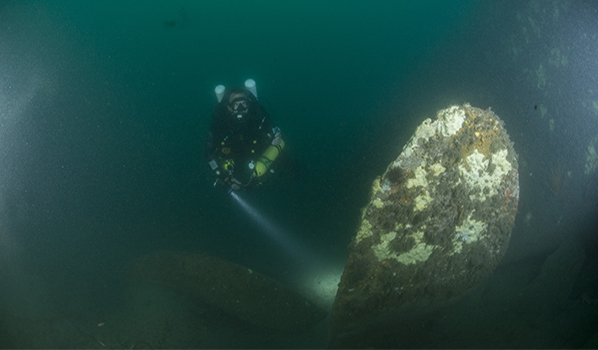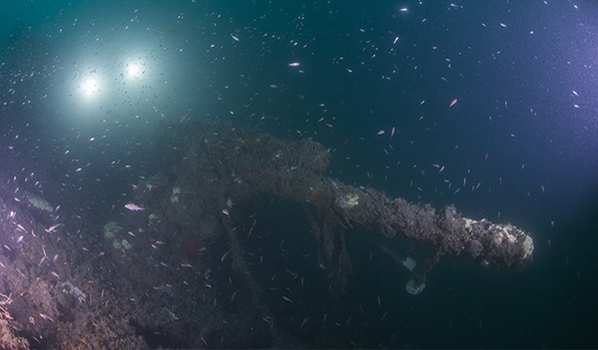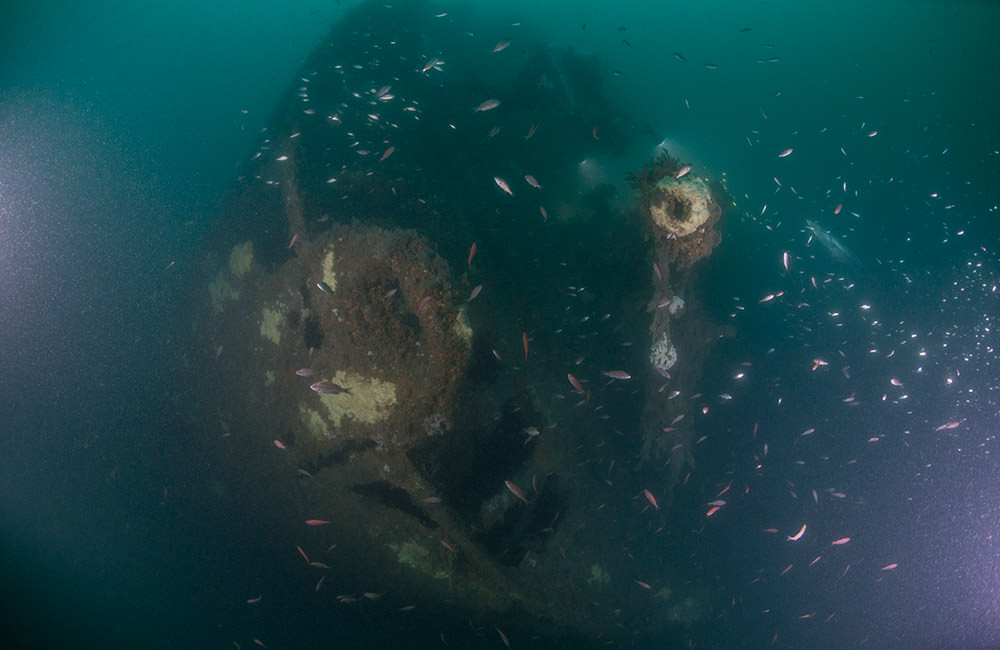San Delfino
Ship Stats
Location: 35°23'52.04"N, 75°6'57.92"W (35.39779, -75.11609)
Depth: 110 feet
Vessel Type: Tanker
Length: 463 feet Breadth: 61.2 feet
Gross Tonnage: 8,072 Cargo: 11,000 tons of aviation fuel, ammunition
Built: 1938, Furness Ship Building Co., Ltd., Middlesborough, United Kingdom
Hull Number: 283 Port of Registry: London, United Kingdom
Owner: Eagle Oil and Shipping Co., Ltd., London, United Kingdom
Lloyd's Register Details: Steel hull, two decks, cruiser stern, fitted for oil fuel, longitudinal framing at bottom and at deck, machinery aft, twin screw, 4 two stroke cycle single acting oil engines
Former Names: N/A
Date Lost: April 10, 1942
Sunk By: U-203 Survivors: 22 of 50 (28 dead)
Data Collected on Site: Side scan sonar survey; still and video photography
Significance: Casualty of World War II's Battle of the Atlantic
Wreck Site
With a depth of 110 feet, the wreck is a popular recreational dive site. The wreck is mostly intact, though angled over to starboard. A large propeller exists, as well as a large deck gun. The engineering spaces are disarticulated with various areas of high relief. Though no boilers are apparent, the evidence of the deck gun makes this wreck site most likely San Delfino. This wreck site is known locally as the "green buoy wreck." It was believed to be either the World War I casualty Mirlo, or the World War II casualty San Delfino. Both vessels were lost in a close geographic area, but they each had very different engines. Mirlo's engine was steam driven, while San Delfino's engine was diesel powered. Diving operations proved the lack of primary boilers or the presence of large diesel engines, thus ruling out Mirlo as the vessel at this wreck site.
Additionally, since 2008, with the assistance of local divers and avocational researchers, NOAA has determined that other initially reported shipwreck identities were incorrect and has been working to clarify their identities. Working with our partners, sites that had been identified as Mirlo, Papoose, W.E. Hutton, and San Delfino have now been more accurately identified as San Delfino, W.E. Hutton, Ario, and Papoose respectively (once believed Mirlo is in fact San Delfino; site of believed Papoose is actually W.E. Hutton; site of W.E. Hutton is Ario; and the site of believed San Delfino is actually Papoose).
NOAA continues to welcome information and data that can assist and strengthen ship histories, identification and personal stories.
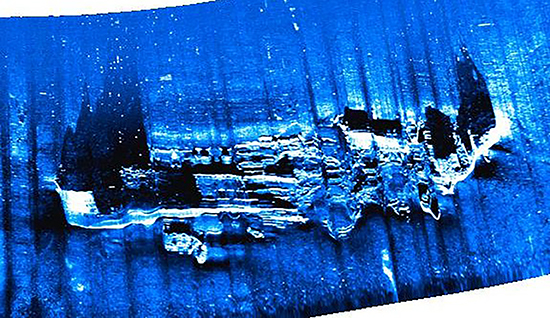
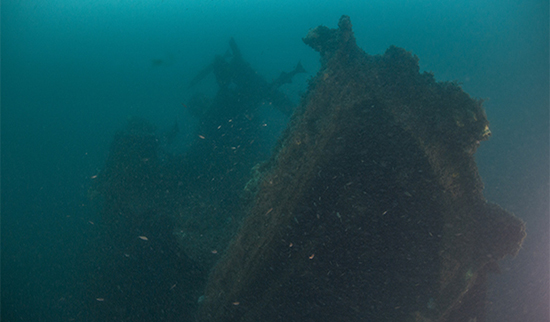
Historical Background
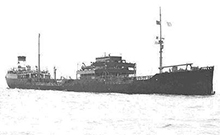
Before the war, the tanker San Delfino worked routes from Mexico, the Gulf of Mexico, and the East Coast of the United States to the United Kingdom. At the outbreak of World War II, San Delfino underwent conversions to add a 4-inch deck gun mounted at the stern and four machine guns located both fore and aft. The vessel also carried two Hotchkiss machine guns and a Lewis machine gun, making it a formidable opponent to any U-boat.
Soon after Germany declared war with the United State on December 11, 1942, the German U-boat commander, Vizeadmiral Karl Dönitz, began plans to strike a swift and devastating blow on the United States' eastern seaboard. His plan was called Operation Paukenschlag, also known as Operation Drumbeat. In late December, five U-boats set sail and the first torpedo strike occurred on January 11. In early April 1942, Operation Drumbeat continued with a fourth wave of U-boats, including U-203, which arrived off the East Coast shortly after a fuel stop in the Azores.
In the early morning hours of April 9, 1942, as U-203 patrolled the waters, it spotted San Delfino traveling alone from Houston, Texas to Halifax, Nova Scotia and on to the United Kingdom. U-203 fired one torpedo, striking the starboard side near the number two or number three tank, instantly igniting some of the 11,000 tons of aviation fuel carried by San Delfino. A second explosion erupted, possibly from either the ammunition cargo or the weapons on board. Flames ignited all over the vessel.
The call to abandon ship was made and two lifeboats were lowered. One of the lifeboats, however, got caught in the current and was dragged into a pool of burning fuel, horrifically killing the 24 crew members and four gunners in the boat. The master, 19 crew members and two gunners in the other life boat were picked up by HMS Norwich City (FY-229) and taken to Morehead City, North Carolina. Of the 50 crew members on board, 28 lost their lives as a result of the attack.


